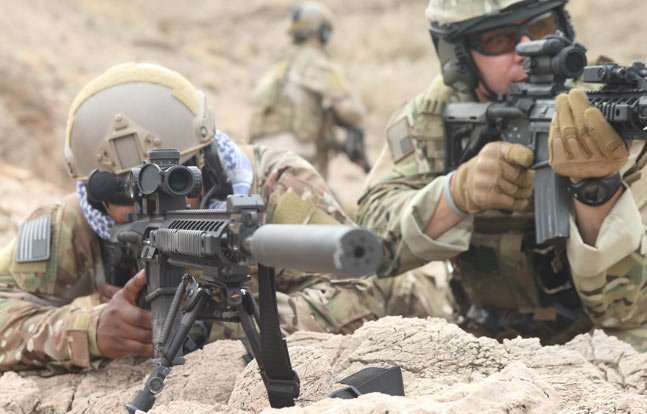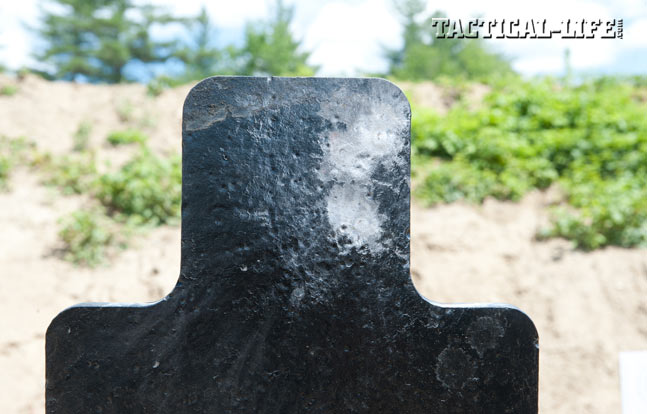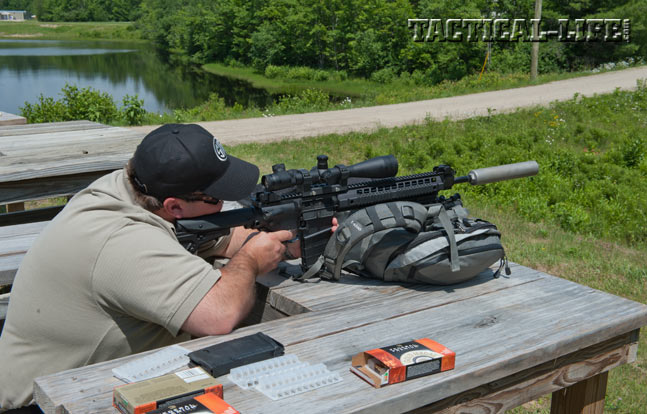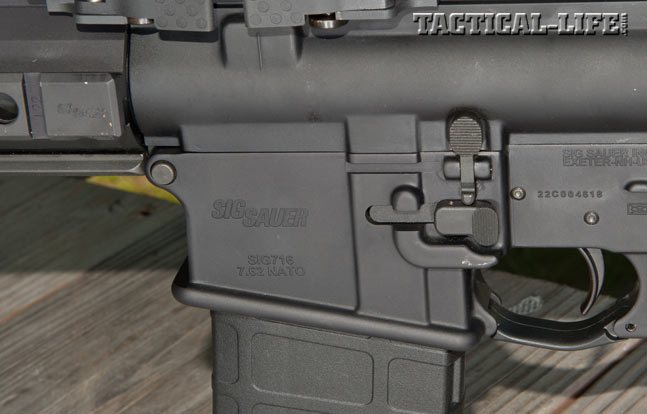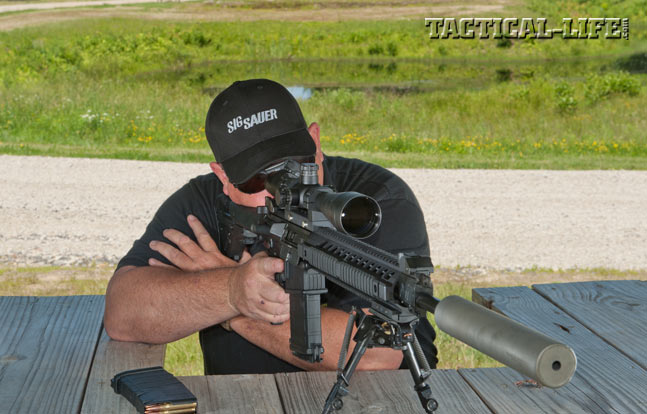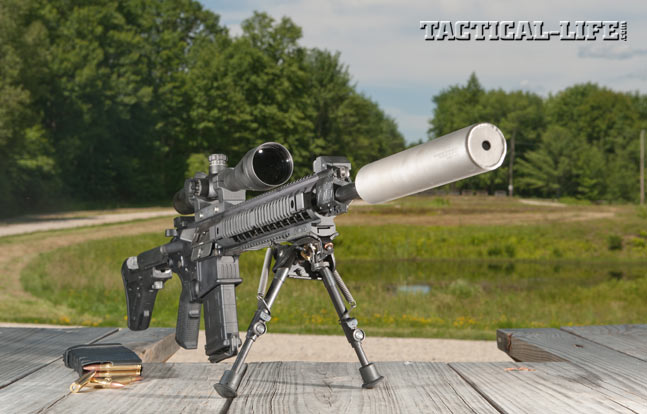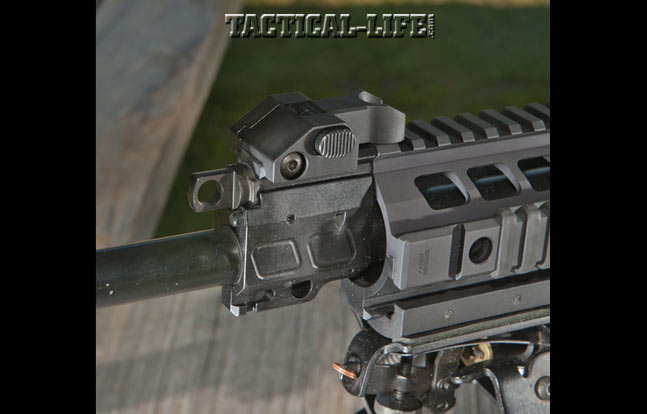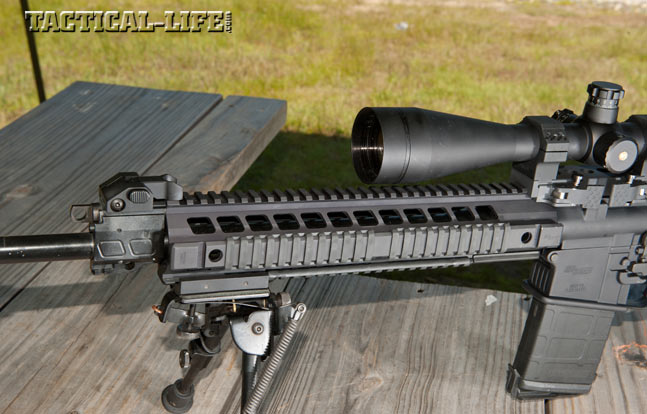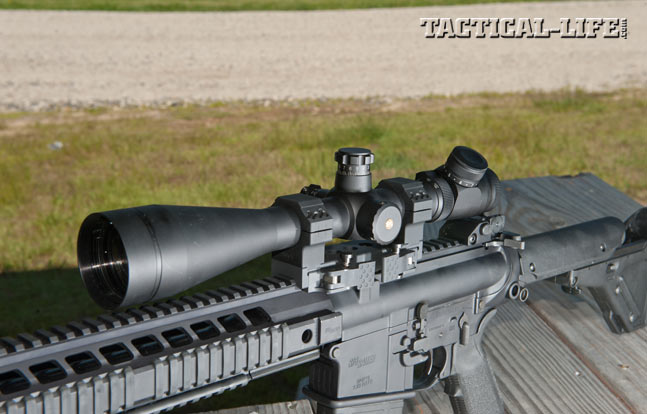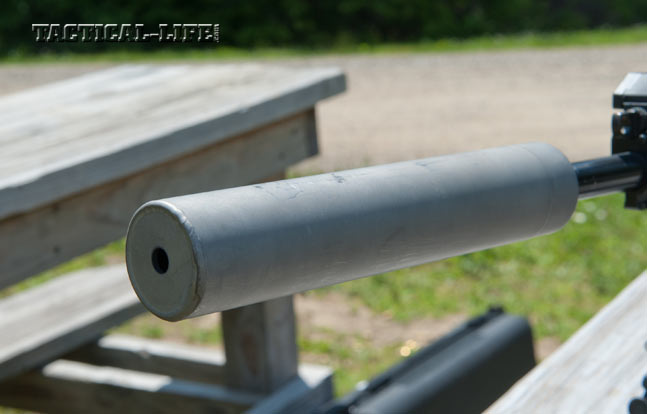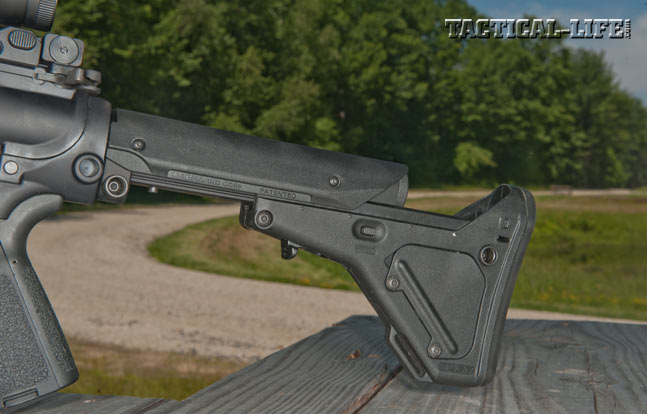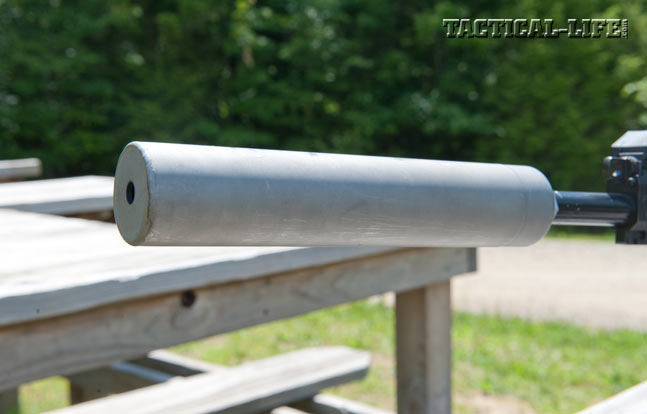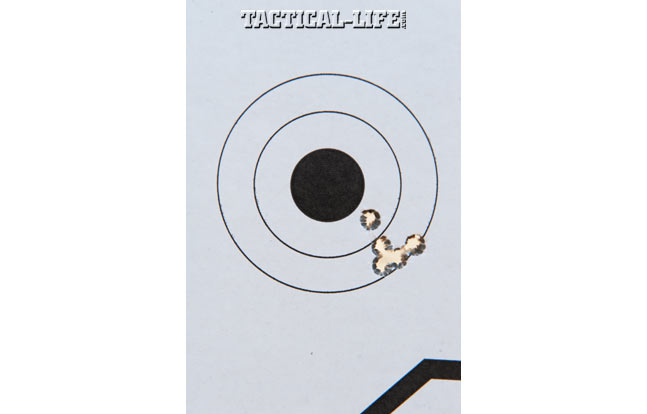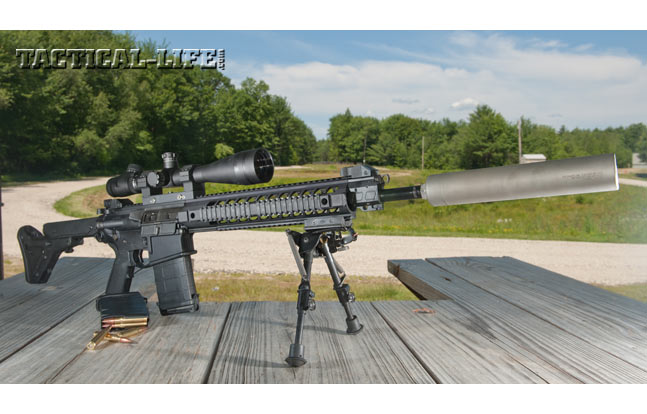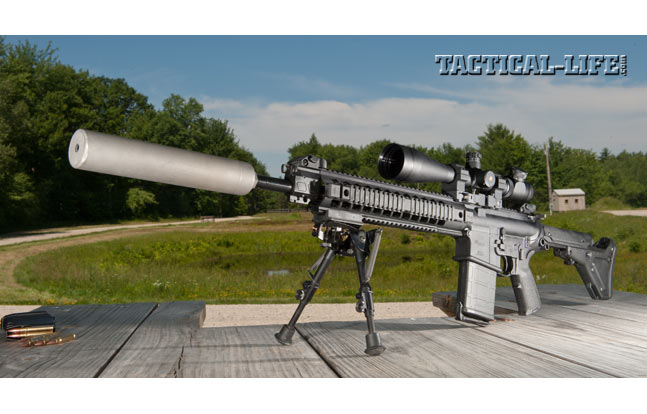The popularity of the AR platform, especially in .308 Winchester/7.62mm NATO, has grown tremendously over the past several years. This has allowed manufacturers to really step up to the plate when it comes to accuracy, reliability and usability. Some of the least accurate rifles these days outshoot custom rifles from years ago. They are stronger, more consistent and feed much better than earlier designs.
RELATED: SIG Sauer 516 5.56mm AR-15 Rifle
While suppressing them can remain an issue, some of the new piston-driven designs have contributed a great deal to improvement in that arena. Sig Sauer’s new SIG716 Precision is an excellent example of just such an improvement. Traveling to the Sig Sauer Academy in Exeter, New Hampshire, recently gave me the opportunity to put one of these fine rifles through its paces, and it was truly impressive.
Advertisement — Continue Reading Below
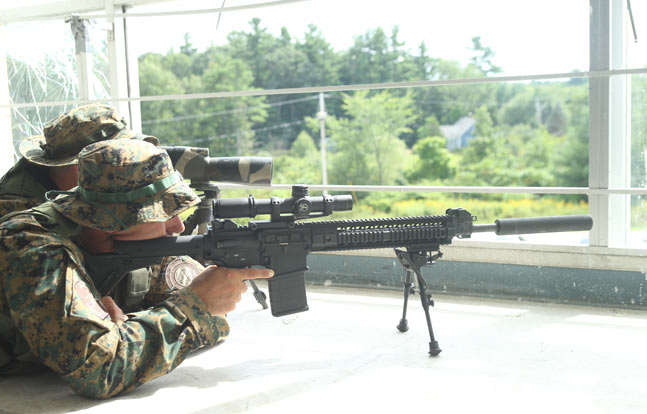
Precision Build
I tested one of the first SIG716s to hit the market, and it was an impressive rifle at the time. Now Sig Sauer has made a ton of improvements to the design. The four-position gas system accommodates suppressors. The barrel is free-floated using a nice handguard with several quick-detach sling attachment positions. Troy Battle Sights, some of the best on the market, come with SIG716 rifles. The upper receiver features M4 feed ramps, allowing it to operate reliably with a wider variety of ammunition. A nicely trimmed bolt provides for a tight lockup and smooth operation in adverse conditions. The lower receiver includes ambidextrous controls. For patrol purposes, the SIG716 yielded some pretty impressive groups, and it was 100 percent reliable with several types of ammunition, including barrier rounds.
“The SIG716 Precision provided for testing was equipped with Sig’s new 7.62mm NATO rifle suppressor…”
Sig Sauer’s Precision model adds a few enhancements. The barrel is a match-grade, 18-inch design with six-groove, 1-in-10-inch-twist rifling. The free-floating forend is also longer, with the gas block located farther forward. The standard single-stage trigger has been replaced with a match-grade, two-stage trigger. The lower receiver also features a Magpul UBR buttstock, which is a bit more adjustable and easier to use with optics. Troy’s Battle Sights come equipped as backups, and all the proven ergonomics and user-friendly features of the SIG716 platform remain.
Advertisement — Continue Reading Below
RELATED: SIG SAUER 556 PATROL RIFLE
The SIG716 Precision provided for testing was equipped with Sig’s new 7.62mm NATO rifle suppressor. Designed for military users, it is lightweight, rugged and built to work properly with this system. Sighting was accomplished using a Leupold Mark 4 LR/T scope with a lighted reticle, a side focus and Leupold’s newest tactical knobs for both elevation and windage adjustments. The scope was installed in a single-piece mount that was as solid as a rock and added 20 minutes of elevation.
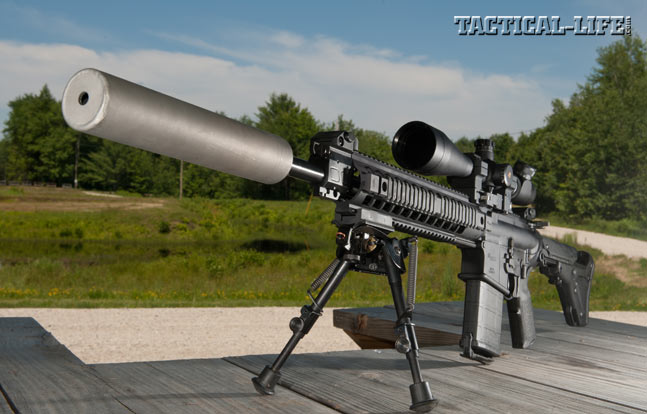
Back To School
Advertisement — Continue Reading Below
The Sig Sauer Academy is a state-of-the-art facility that allowed for some pretty extensive testing. Over a day and a half, I was able to run the SIG716 Precision, SIG556R and an M400 through their paces. While not my usual testing protocol, I was able to test the SIG716 Precision’s accuracy, consistency and reliability at various ranges. My ammunition was limited to Federal’s superb Gold Medal Match, but that remains a first choice for many agencies and is indicative of most match-grade ammunition.
“It was the most consistently accurate piston-driven AR I’ve used to date…”
My first concern with any police marksman’s rifle is the cold bore. In the vast majority of real-world deployments, this is the only shot you get. Since this rifle had been pre-zeroed (not to my eye) the first test was to drop into prone and shoot using the bipod. It was about as cold as it gets under the circumstances. I loaded a Magpul PMAG, charged the rifle and fired a five-shot group. The first four rounds all landed in a cluster that was somewhere between 0.5 and 0.7 inches, with one screw-up on my part yielding a 0.75-inch group. While the Magpul UBR stock is nice, it is not my first choice for a precision rifle, so the rifle shifted a bit in my pocket. I probably would have done better with a Magpul PRS, which would have fit me a bit better. The trigger was very crisp and predictable, with what I would guess is about a 2-pound second stage. All together, it felt like a 5-pound total pull weight.
I gave the rifle a couple of minutes to cool and then repeated the process two more times. Each time, the first round landed almost exactly in the same spot—within a quarter-inch. After some testing for function, we all went to lunch, allowing the SIG716 to cool completely. Returning from lunch, I fired another group with the same results. While the final group was actually smaller in size, the first group had the tightest cluster of four rounds. Shooting groups is as much about fitting the rifle to the shooter, so after spending some time to precisely fit it to me, my guess is that this rifle is a consistent 0.5-MOA rifle or less with factory match ammunition. Either way, it was the most consistently accurate piston-driven AR I’ve used to date—and I was running it with a suppressor. Most importantly, the cold bore was in the same spot each time.
Advertisement — Continue Reading Below
Moving back to 300 yards, I fired groups at steel from a benchrest using my photography backpack as a rest. Shooting from a wooden bench, my preference is a bag or pack. It’s harder for me to use a Harris bipod as effectively unless I’m shooting from prone. I fired several groups using the head portion of the steel target to determine the wind. Using a simple hold, I produced a couple of globs, each measuring a bit under 2 inches. One three-shot group was probably closer to 1.5 inches. There was no issue with this rifle holding under 1 MOA at this range, and it was closer to 0.5 MOA, comparable to many bolt-action rifles used by police officers today.
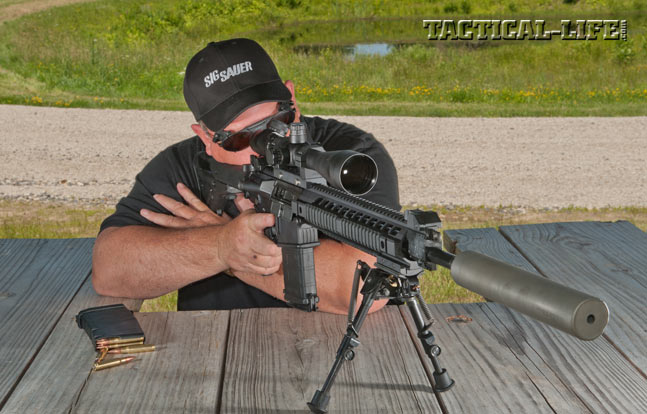
Going 800-Yards Long
The last test of accuracy moved us back to a bit over 800 yards. A target specifically designed for long-range shots, with a smaller white steel portion surrounded by a larger portion that allowed for shots to be heard and called, was set up just beyond the rifle range. You can get out to 1,000 yards on this kind of target, but 800-plus was fine for me. After a few rounds trying to just hold over, it was time to get serious and drag out the ballistics program on my smartphone. This particular scope used MOA adjustments, and all of my programs are set up for mils. So, with a bit of conversion, I dialed the 800-yard elevation into the scope. Reading the wind and taking my time resulted in a clear and solid hit on the center steel. Firing a couple more times, it was almost too easy to make hits. Handing the rifle over to my host, Jarrod McDevitt, he proceeded to pretty much hit the steel as often as he pressed the trigger. I have little doubt that this rifle is consistent at any practical range with the 7.62mm NATO cartridge.
Advertisement — Continue Reading Below
All of the testing was completed with the suppressor attached. The suppressor is made of titanium, which reduces weight and shifts in impact. Lifting the rifle, it remained well balanced and was not so barrel heavy as to be unwieldy. None of the testing required hearing protection—it was quite comfortable. Having shot dozens of suppressors, this one’s as quiet as most. How quiet a suppressor truly is when outdoors is rather subjective, but given my time behind them, it was as good as any. A few decibels make a difference in a lab, but to the average operator they are less critical. It’s fine so long as it is comfortable to shoot. The suppressor did not affect the cold bore or any overall consistency.
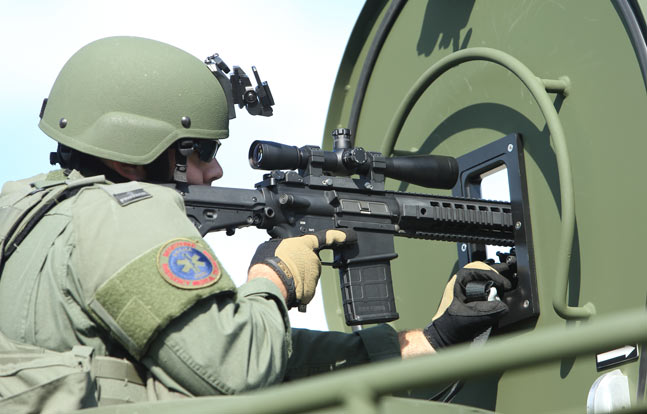
DMR Approved
Within the limitations of the test, the SIG716 Precision proved to be an excellent rifle. With Federal’s Gold Medal Match ammo, it shot mostly into half an inch at 100 yards. Given different ammunition, it may get better. With all the emphasis on shooting tiny groups these days, however, it is easy to forget the real-world mission of a police precision rifle. The standard remains holding under 1 MOA to do the job, and while tighter is better, this rifle far exceeds any real-world requirements. Exhibiting consistent accuracy at 300 and even 800 yards, it just does not get much better in a semi-automatic, and many bolt actions would be happy with this type of accuracy.
Advertisement — Continue Reading Below
“Coupled with the lack of recoil and movement after shots, it’s easy to stay on target and get the job done…”
My preference would be for a Magpul PRS stock rather than the UBR that was on the test rifle. Having the ability to collapse is less critical given the mission of a precision rifle. Most precision marksmen do not share rifles, so being able to quickly adjust the stock is generally not an issue. Having a solid mating to the shooter is the most critical aspect, especially with a semi-automatic, making the Magpul PRS a better choice for me. Once set up, the PRS doesn’t move and allows me to get a better eye position on the scope.
Overall, the SIG716 Precision is one heck of a rifle. It’s perfectly suited to any DMR or police precision marksman role. It worked suppressed, cold bores were consistent and it was reliable. Its increased capacity and the capability for incredibly fast follow-up shots are both very useful. Coupled with the lack of recoil and movement after shots, it’s easy to stay on target and get the job done. If you are thinking about a semi-auto as a DMR, or even as a primary precision rifle, make sure you check out the SIG716 Precision.
For more information, visit sigsauer.com or call 603-610-3000.
Advertisement — Continue Reading Below

